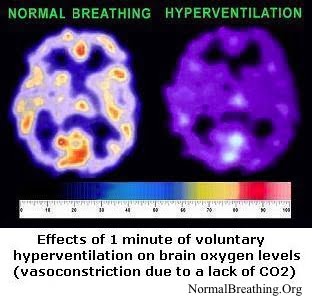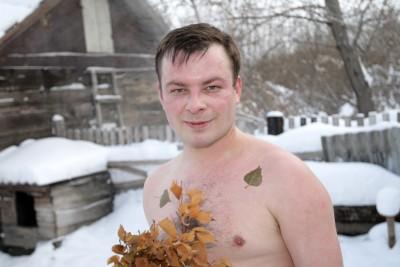- Updated on October 29, 2020
![]() By Dr. Artour Rakhimov, Alternative Health Educator and Author
By Dr. Artour Rakhimov, Alternative Health Educator and Author
- Medically Reviewed by Naziliya Rakhimova, MD
Benefits of taking cold showers
For proven clinical benefits, see the YouTube video on the right side: Cold Shower Benefits. This video features Dr. KP Buteyko, MD, Ph.D., an author of the legendary Buteyko breathing method. He taught about 200 Soviet and Russian medical doctors how to safely apply cold shower in order to increase body oxygenation. (This breathing method is officially approved by the Russian Ministry of Health for treatment of asthma and heart disease.)
Medical research suggested the following benefits of regular cold shower application:
– activation of the sympathetic nervous system (Shevchuk, 2008)
– the increased blood level of beta-endorphin and noradrenaline and increased synaptic release of noradrenaline in the brain as well (Shevchuk, 2008)
– electrical stimulation of peripheral nerve endings to the brain, which could result in an anti-depressive effect (Shevchuk, 2008)
– significant analgesic effect without noticeable side effects or causing dependence (Shevchuk, 2008)
– reduction in muscle soreness after running a marathon (Liang et al, 2001)
– improved quality of sleep (Onen et al, 1994)
– decrease of the uric acid level in blood plasma (Brenke et al, 1994)
– inhibition of purine metabolism (Brenke et al, 1994)
– long-term antioxidative adaptation (Brenke et al, 1994)
– the improved tone of the skin and muscles (Mergeay et al, 1990)
– reduction in uremic pruritus (a major problem for patients with an end-stage renal disease) (Zucker et al, 2003)
– increase in brown fat cells, which protect from aging; fight obesity, diabetes, and heart disease (Kanzleiter et al,2005; Mattson, 2010).
All references and quotes are provided below.
Brown fat = special fat cells that have, unlike white fat cells, high concentrations of mitochondria and, therefore, are able to generate heat without any muscular activity. Brown fat concentrations are very high in newborns and infants but gradually decline with aging due to the absence of cold stimulation in the general population.
Medical research in relation to brown fat or brown adipose tissues is one of the top priorities in modern medical biochemistry and molecular biology, as a potential treatment for obesity, diabetes, and diseases of aging (see shocking benefits found in Cold shower studies).
While many doctors investigate how to increase brown fat concentrations in humans using medical drugs and transplantation, some natural doctors suggested the most natural way to increase our brown fat stores, cold showering.
Body Dowsing for better body oxygenation and breathing retraining
 Dr. Buteyko and his MDs always viewed cold-water adaptation (e.g., taking a cold shower, cold-water dowsing, bathing in the snow, etc.) as an important part of the Buteyko method of breathing retraining. There are several known physiological processes that help us to achieve slower and easier breathing due to better adaptation to cold conditions.
Dr. Buteyko and his MDs always viewed cold-water adaptation (e.g., taking a cold shower, cold-water dowsing, bathing in the snow, etc.) as an important part of the Buteyko method of breathing retraining. There are several known physiological processes that help us to achieve slower and easier breathing due to better adaptation to cold conditions.
(Note that this positive adaptation takes place only when the person follows certain rules explained below.) Some of these beneficial processes are:
1. Cold showering favorably redistributes the blood in a way that is similar to the effects of CO2 and NO on arteries and arterioles. Since cold water is applied on the surface of the body, the veins located near the surface constrict and the blood is pushed into arteries, arterioles, and capillaries.
Over two-thirds of systemic resistance to blood flow in the cardiovascular system is in these blood vessels (arteries, arterioles, and capillaries). Hence, this blood redistribution causes and leads to better perfusion (blood supply) of all tissues and organs and reduces heart rate. In this sense, the application of cold water has some similarities with CO2 and NO effects on blood vessels.
 2. Regular use of cold shower reduces heat losses (KP. Buteyko) and decreases core body temperature (Russian health nuts are preoccupied with having lower body temperature due to a wide-spread belief that just one-degree reduction in core body temperature extends expected lifespan of humans by some decades.)
2. Regular use of cold shower reduces heat losses (KP. Buteyko) and decreases core body temperature (Russian health nuts are preoccupied with having lower body temperature due to a wide-spread belief that just one-degree reduction in core body temperature extends expected lifespan of humans by some decades.)
3. Cold-water adaptation builds up brown-fat cells, which have a large concentration of mitochondria to generate heat without physical contraction or muscular movements.
4. A German study found positive effects of such body hardening on certain blood parameters.
5. Correct application of cold shower water (see Rule #3 below: gradual exposure) results in natural breath holding probably due to some natural reflex. Hence, taking, for example, a cold shower results in all beneficial mechanisms and effects related to CO2 uses in the human body, including better oxygenation and perfusion of all vital organs, calmer mind, improved immunity, better sleep and digestion, and many others due to increased body-oxygen content (as measured with the DIY body-oxygen test) by about 2-3 s.
In my view, the application of a cold shower has about the same effect on health and CP (control pause), although physiologically different, as one half of the typical Buteyko breathing exercise session.
6. Most importantly, regular use of cold showers will help you to adapt to cold conditions and improve your morning CP due to normalized thermoregulation and general adaptation to cold conditions. This CP increase means better general health and well-being with improvements in all systems and organs of the human body.
Body dowsing rules and restrictions
 The below rules and restrictions are based on the clinical experience of 200 Russian doctors. They taught the Buteyko self-oxygenation breathing therapy to ten thousands of Russian patients.
The below rules and restrictions are based on the clinical experience of 200 Russian doctors. They taught the Buteyko self-oxygenation breathing therapy to ten thousands of Russian patients.
(This therapy is officially approved by the Russian Health Ministry.) Taking cold showers is an integral part of the Buteyko breathing method. Why? Doctor Buteyko and his colleagues found that taking a cold shower, when safe, increases oxygenation of the body and improves personal well-being.
For these reasons, all these doctors explained the main rules regarding water- and cold-tempering activities. When is it safe to take a cold shower? How to take a cold shower?
Rule #1 is to have sufficient body oxygen stores and to feel well. The person should measure their own oxygen content using the stress-free breath holding time test: the CP (control pause) before taking a cold shower. For this medical therapy, the CP is the key parameter of health.
These Russian doctors tested many thousands of patients and discovered the following results since this test is the key parameter of health for the Buteyko technique.
Severely sick, terminally ill and hospitalized patients have from 1 to about 10 s CP. With approaching death, their breathing gets heavier (deeper and/or faster), while the CP approaches zero: 5, 4, 3, 2, and only 1 second of oxygen in the body just before the death. Over 90% of people die in conditions of severe overbreathing.
Sick patients with mild forms of chronic disease (asthma, bronchitis, heart disease, cystic fibrosis, diabetes, cancer, etc.) have about 10-20 s CP (body oxygen content). These patients are usually on medication to control their symptoms.
Asymptomatic asthmatics, heart patients with no symptoms and many others have slightly more than 20 s of oxygen in the body.
Healthy adults, according to published western results, should have about 40 s CP. This result corresponds to a normal breathing pattern, but Doctor Buteyko found that 60 s CP is incompatible with about 150 chronic diseases or diseases of civilization.
(His norm corresponds to even slower breathing: about 4 L/min for minute ventilation and 8 breaths per minute for the respiratory frequency at rest.) Hence, he established 60 s as a standard of ideal health.
Rule #1, according to Russian doctors, is to have over 20 s of oxygen in the body when you take a cold shower and to feel well. If one’s oxygenation is less, such a patient is likely to get an infection, fever, sore throat, blocked nose, and/or other negative symptoms. Also, when one feels unwell due to, for example, approaching infection or his or her normal CP dropped a low (e.g., from 60 down to 23 seconds – such people can recover from flu in hours, but a cold shower would not be a good idea at this critical time), then one needs to postpone cold showering till better times.
This is the key restriction for taking a cold shower. (Note that if you have been taking it for months or years with less then 20 s CP, you could be able to continue to take it safely, but it is better if you increase your CP so as to enjoy better health and quality of life.)
Other rules (for how to take a cold shower) are:
Rule #2. Start with warming up bones and deeper body tissues with warm water, if they got cold from prolonged cold exposure.
 Rule #3. Very gradually change water temperature from warm to cold (or apply cold water to various body parts in sequence, you can also install dual shower heads to achieve this) so that transition to cold is very gradual (up to 40-60 s). If you use only cold water, apply cold water for one arm only.
Rule #3. Very gradually change water temperature from warm to cold (or apply cold water to various body parts in sequence, you can also install dual shower heads to achieve this) so that transition to cold is very gradual (up to 40-60 s). If you use only cold water, apply cold water for one arm only.
Then do the same with the other arm. After finishing both arms, apply cold water for one leg only. Then use cold water for the other leg. Finally, start with the lower trunk and rise up to the shoulders, which are the most sensitive area.
There are a great tip and practical exercise for taking a cold shower. It is hidden below as your bonus content.
Every time, when you take a cold shower using this “slow” method, make sure and check that your breathing naturally becomes small and slow. Many healthy people even hold their breath naturally for some ten seconds or even for over 1 minute and more (for breathing students with ideal health).
[/sociallocker]
Rule #4. Apply cold shower for about 30-60 s so that to cool down deep tissues of your body.
Rule #5. If you use a contrast shower (cold-warm-cold-warm…), always finish with cold water (unless you feel that your blood sugar gets too low).
Rule #6. Some Russian Buteyko MDs suggest that it is good to let the water dry naturally without the use of a towel. Others recommend vigorous rubbing with a towel until the skin gets warm.
Warning. Note that you should not take a cold shower immediately after a too long and exhausting session of physical exercise, under influence of alcohol (it can cause fainting), or when your blood glucose level is low, or soon after meals. Ideally, it should be done on an empty stomach.
Clinical References
Kanzleiter T, Schneider T, Walter I, Bolze F, Eickhorst C, Heldmaier G, Klaus S, Klingenspor M. Evidence for Nr4a1 as a cold-induced effector of brown fat thermogenesis, Physiol Genomics. 2005 Dec 14;24(1):37-44. Epub 2005 Oct 11.
Liang MT, Allen TW, McKeigue ME, Kotis A, Gierke LW. Effect of cooling on muscular health prior to running a marathon, J Am Osteopath Assoc. 2001 Apr;101(4):219-25.
Lidell ME, Enerbäck S. Brown adipose tissue–a new role in humans? Nat Rev Endocrinol. 2010 Jun;6(6):319-25. doi: 10.1038/nrendo.2010.64. Epub 2010 Apr 13.
Mattson MP. Perspective: Does brown fat protect against diseases of aging? Ageing Res Rev. 2010 Jan;9(1):69-76. doi: 10.1016/j.arr.2009.11.004. Epub 2009 Dec 5.
Ravussin E, Kozak LP. Have we entered the brown adipose tissue renaissance? Obes Rev. 2009 May;10(3):265-8. doi: 10.1111/j.1467-789X.2008.00559.x. Epub 2009 Jan 19.
Shevchuk NA. Adapted cold shower as a potential treatment for depression, Med Hypotheses. 2008;70(5):995-1001. Epub 2007 Nov 13.
Shevchuk NA. Hydrotherapy as a possible neuroleptic and sedative treatment, Med Hypotheses. 2008;70(2):230-8. Epub 2007 Jul 20.
Zucker I, Yosipovitch G, David M, Gafter U, Boner G. Prevalence and characterization of uremic pruritus in patients undergoing hemodialysis: uremic pruritus is still a major problem for patients with end-stage renal disease, J Am Acad Dermatol. 2003 Nov;49(5):842-6.

